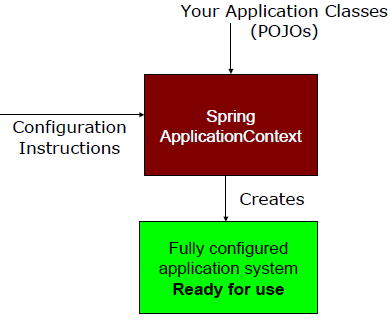In this section, I will explain the process required to configure dependencies in an application. The mainstream injectors are Google Guice, Spring, and Weld. In this chapter, I am using the Spring Framework, so, we will see the Spring configuration here. The following diagram is a high-level view of how Spring works:

How Spring works using dependency injection pattern
In the preceding diagram, the Configuration Instruction is the meta configuration of your application. Here, we define the dependencies in Your Application Classes (POJOs), and initialize the Spring container to resolve the dependency by combining the POJOs and Configuration Instructions, and finally, you have a fully configured and executable system or application.
As you have seen in the preceding diagram, the Spring container creates the beans in your application, and assembles them for relationships between those objects via the DI pattern. The Spring container creates...



